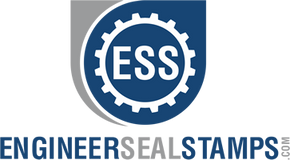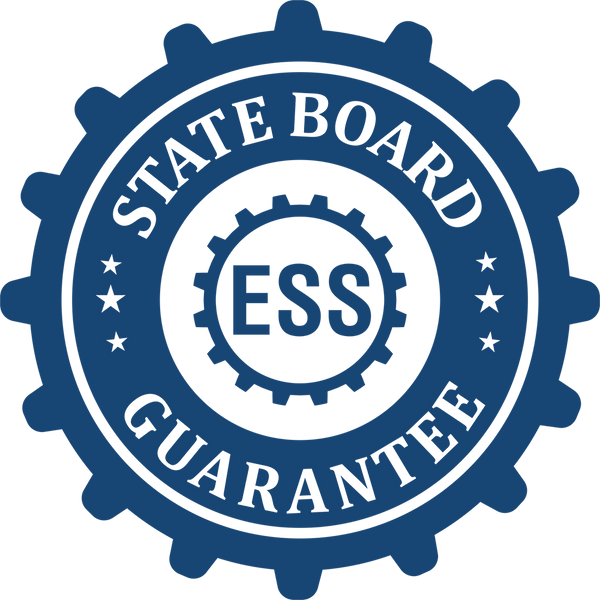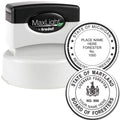Natural light can make a cramped apartment feel more open almost instantly, but did you know the right kind of postage can transform your mailing process in a similar way? If you’ve ever dreaded the hassle of sticking stamps on hundreds of envelopes, then a no postage necessary stamp might be your new best friend. In short, it’s your ticket to simplified, cost-effective mailings that let you put your brand front and center without jumping through time-consuming hoops.
Whether you mail out holiday catalogs or regular fundraising letters, you want an approach that’s efficient, affordable, and hassle-free. Here’s the good news: a no postage necessary stamp checks all those boxes. In the following sections, you’ll learn all about these stamps, discover how to use them for bulk mail, and get insider tips on making your mailings look polished and professional. Let’s dive in.
Discover No Postage Necessary Stamp
Picture this: you’re sending out a stack of letters, and you don’t want your recipients to have to pay for postage. With a no postage necessary stamp, your envelope indicates that you’ve taken care of the mailing costs on the back end. It’s basically a specialized marking that tells the USPS (United States Postal Service) that postage is accounted for—no need for individuals to fork over a stamp or rummage for spare change.
What Exactly Is It?
A no postage necessary stamp is a pre-authorized print or imprint valid for certain types of bulk or business reply mail. Recipients simply drop the return envelope or postcard in the mail. Because you’ve set up a valid permit in advance, the USPS knows to deliver it and bill you for postage based on the actual pieces returned. This system streamlines your communication, making direct mail more convenient for your recipients.
Why It Matters
- You let customers and clients mail their responses without personally paying postage.
- You look professional, showing you value your audience’s convenience.
- You keep tight control over costs, paying only for what gets mailed back.
When you work with a top supplier like ESS, you’ll see how easy and custom-tailored these stamps can be. ESS is family owned and operated since 1964, boasting 60 years of service. Over that time, they’ve honed stellar customer service practices, and their super fast turnaround makes life easier for anyone running a direct mail campaign. If you need no postage necessary stamps, endicia stamps, or USPS mailing stamps for bulk mail, they’ve got you covered.
Understand Bulk Mail Essentials
Before you jump into using a no postage necessary stamp, it helps to understand the basics of bulk mail. Bulk mailing is an umbrella term for sending large quantities of mail at discounted postage rates. Businesses, nonprofits, and organizations love it: you get volume-based savings, consistent branding, and the ability to reach many people at once.
What Counts as Bulk Mail?
Generally, bulk mail refers to a specific minimum quantity of identical pieces. You might be sending catalogs, letters, postcards, or flyers. When your volume meets USPS thresholds, you qualify for reduced postage rates. The key is to prepare your mail in a way that follows USPS guidelines—pre-sorting by ZIP code, adding the right barcodes, and ensuring consistency across your mailpieces.
How the Permit System Works
To use a no postage necessary stamp on bulk mail, you’ll register for a mail permit, often called a Business Reply Mail permit. Once you have that, you can print or affix a special stamp or pre-printed design to your mailpieces. This indicates that postage will be paid through the permit account rather than individual stamps. Because ESS specializes in custom bulk mail permit stamps, they’ll guide you through the process so you don’t have to doubt whether everything meets USPS regulations.
Common Misconceptions
- “Bulk mail isn’t personal.” Actually, targeted mailing lists can help you tailor messages so they feel personal.
- “Applying for a permit is too complicated.” When you work with a knowledgeable supplier, it’s quite straightforward.
- “I’ll be stuck with extra fees.” In reality, you’re only charged for the mailpieces that come back through the permit system.
Gain Key Advantages
Think about how often you toss mail because it looks too complicated or demands too much effort. With a no postage necessary stamp, you remove friction. People don’t need to buy stamps or worry about envelopes, so they’re far more likely to respond.
1. Streamlined Customer Interaction
If you’re using direct mail to encourage product returns, send out surveys, or handle magazine subscriptions, a single piece of mail often calls recipients to do something. Maybe you want feedback or a confirmed order. When there’s no hassle about applying postage, they’re more inclined to pop that reply right back in the mailbox. That jump in response rate can directly translate to better engagement, more leads, and higher sales.
2. Cost Efficiencies
You might wonder if handing out “free” postage to every recipient will run up your costs. Actually, you only pay for the postage on the replies you receive. That’s a big reason no postage necessary stamps are popular for businesses, nonprofits, and membership organizations that rely on response rates. You set up the permit, and the USPS calculates the total usage once responses flow in. Over time, this can be cheaper than a standard pre-stamped approach.
3. Brand Credibility
When you let people respond at no charge, you’re sending a subtle message: “We value you and want your feedback or participation.” That sense of care elevates your brand’s stature. Plus, a well-designed no postage necessary imprint or stamp can reinforce your logo, your color scheme, or your tagline. You look polished and consistent, and in a world where every detail counts, that’s an advantage you don’t want to miss.
4. Smooth Logistics
Coordinating a large mailing can feel chaotic. Adding a no postage necessary stamp to your workflow cuts out steps for your recipients, which also means fewer headaches for you. You won’t have to justify to them why they should pay to return something. And when you work with ESS, you’ll experience super fast turnaround times and dependable design services, so your mail campaign gets out the door promptly.
Follow A Step-by-Step Setup
Now that you see the benefits, let’s dig into how you actually get these stamps. If you’re new to the bulk mail permit realm, don’t worry. Below, you’ll find a simple path that breaks it down for you, so you know exactly what to do.
1. Decide on Your Mailing Volume
First, decide how many pieces you plan to send. You’ll need to meet the USPS minimums for bulk or business reply mail. Requirements can vary, but typically you’re looking at at least 200 pieces or 50 pounds of mail in a single batch. Check USPS guidelines for up-to-date numbers, or talk to a mail specialist at ESS for clarity.
2. Secure a Bulk Mail Permit
Next, you’ll apply for a business reply mail permit (the umbrella category for a no postage necessary stamp). You can do this at your local post office or via the USPS website. There’s usually an annual fee or application fee associated, which grants you permission to use specialized markings on your bulk mail.
3. Work with a Stamp Supplier
Once your permit is in place, it’s time to design your stamp. A no postage necessary stamp is typically customized to include your permit number, city, and state. This ensures the USPS knows exactly how to process it for billing. An experienced supplier like ESS will handle the design so it meets postal specifications, plus any branding elements you’d like.
- Provide your permit details.
- Choose any color or style preferences that fit your brand.
- Confirm the final design and quantity of stamps (or pre-printed envelopes).
4. Consider Other Stamp Options
A no postage necessary stamp isn’t your only choice. If you want a strategy where you pay only if someone actually responds, check out a business reply stamp. Similar to a no postage necessary stamp, a business reply setup also requires a permit, but it often follows a slightly different billing structure. By exploring both, you can decide which best meets your needs.
5. Prep Your Envelopes
With the permit approved and your stamps in hand, it’s time for assembly. Here’s where to pay attention to details:
- Position the no postage necessary stamp in the top-right corner, where standard postage typically goes.
- Make sure your return address is clearly visible, typically at the top-left corner.
- Double-check the barcode and permit markings follow USPS guidelines.
6. Mail and Track
Take your completed mailpieces to the post office or arrange for a pickup if your volume is sizable. Request a receipt or confirmation, especially for large mail campaigns. After the responses start rolling in, you’ll receive a statement showing how many pieces arrived and your total postage cost.
Once you get the hang of it, you’ll find the entire system is straightforward. For added convenience, ESS offers quick adjustments if you change your design or if your brand identity shifts. They’re family owned and operated, and the personal touch often shows in the form of stellar customer service.
Apply Best Practices
You’ve got the basics, but to truly optimize your no postage necessary stamp, keep these tips in mind. They’ll help you avoid pitfalls and get the most out of your direct mail strategy.
Branding and Design Tips
- Keep it clean: Avoid clutter in the top-right corner, and ensure the stamp design is legible.
- Maintain brand consistency: Match your stamp’s color, if possible, to your logo or envelope design. You want a cohesive look that people remember.
- Include a small call to action (CTA): Consider adding a short message like “Your response is valued!” near the stamp area, but ensure the USPS-required text remains more prominent.
Envelope Layout
- Preserve the barcode zone: The USPS may require a clear area at the bottom of your envelope for automated scanning.
- Choose the right envelope size: Larger envelopes can make the mailpiece more noticeable, but measure your cost trade-offs.
- Avoid overstuffing: Weight directly impacts postage. If you’re including inserts, factor that into your plan.
Timing and Frequency
If you’re sending regular mailers (like monthly billing statements or subscription renewals), consider scheduling them so recipients anticipate them around the same time each cycle. That predictability often boosts open rates. Also, watch for seasonal mail spikes—holidays can slow delivery. Mailing early is the best way to stay on schedule.
Compare Traditional Postage Methods
Still not sure if a no postage necessary stamp fits your situation? Let’s lay out some common alternatives side by side. This table can help you spot differences in cost, convenience, and overall brand impact.
| Method | Key Feature | Who It’s Best For | Cost Structure |
|---|---|---|---|
| Standard Stamp | Used for single envelopes | Individuals, small senders | Pay per stamp regardless of volume |
| Metered Postage | Printed postage at your site | Small to mid-sized businesses | Requires rental/purchase of meter, pay per impression |
| No Postage Necessary Stamp | Pre-authorized for returns | Businesses seeking responses | Pay only for returned mailpieces |
| Business Reply Stamp | Another form of permit-based mail | Marketers, nonprofits | Similar cost structure to no postage necessary stamp |
Weighing the Pros and Cons
- Standard stamps are simple but not cost-effective in large volumes.
- Metered postage can be efficient for certain volumes but involves fees or meter rental.
- No postage necessary stamps shine when you need a frictionless user response.
- A business reply stamp can also fit if you prefer that style or billing structure.
Use the method that saves you the most in postage while meeting your outreach objectives. Sometimes, you may combine strategies depending on the nature of your mail pieces.
Review Potential Drawbacks
While a no postage necessary stamp has clear perks, it’s not entirely one-size-fits-all. You’ll want to be aware of potential constraints so you can plan effectively.
1. Upfront Permit Costs
You’ll pay a fee to set up your business reply or bulk mail permit. This might be a barrier if your mailing volume is relatively small. However, if you’re sending enough pieces, the savings from discounted bulk rates often outweigh these fees.
2. USPS Regulations
To use a no postage necessary stamp, you’ll need to adhere to USPS design guidelines, placement rules, and address formatting. Missing or inaccurate details can lead to delays or returned mail. That said, an experienced partner like ESS makes sure everything is done right the first time.
3. Possible Response Overestimation
If you plan a massive campaign with the assumption that everyone will respond, you could pay more in postage fees than expected once replies come back. Monitoring your average response rate from past mail campaigns can help you estimate actual costs.
See Real-World Scenarios
Sometimes, it’s easier to infer value by seeing how others use no postage necessary stamps. Below are a few scenarios that illustrate the flexibility of this approach.
Nonprofit Fundraising Drives
Many nonprofits rely on direct mail for donations. Including a reply envelope with a no postage necessary stamp removes one barrier for donors. The convenience can make a significant difference in response rates.
Small Business Promotions
If you own a small business and frequently mail coupons or product catalogs, a pre-authorized envelope encourages customers to send in orders or feedback. It’s a smart way to gather valuable data on your product line or gauge interest in new services.
Subscription Renewals
Magazines, clubs, and membership organizations often use these stamps to prompt timely renewals. It adds a touch of professionalism when recipients see that the organization has covered postage, suggesting you value their continued engagement.
Survey Campaigns
Surveys can be powerful for collecting customer insights. Make returning them easy by removing the cost barrier. When users feel it’s quick and free to fill it out, you’re more likely to get honest responses.
Find Answers To FAQs
Below are some of the most common questions about no postage necessary stamps, along with concise answers to help you navigate the process with confidence.
Do I Need a Permit for a No Postage Necessary Stamp?
Yes, you’ll need a business reply mail permit or similar USPS authorization. This ensures any returned or outgoing pieces are correctly billed to your account.Is a No Postage Necessary Stamp the Same as a Business Reply Stamp?
They function under the same USPS permit category but might have different billing structures. Both let recipients mail items without paying for postage themselves.What If I Don’t Know My Mailing Volume Yet?
If you’re unsure, consult with a mailing professional at ESS. They can help estimate volume, advise on the feasibility of a permit, and recommend a solution tailored to your needs.Does Using a No Postage Necessary Stamp Delay Delivery?
Generally, it doesn’t cause delays. As long as the USPS guidelines are followed and your address data is accurate, your mail should move seamlessly.Can I Customize My Stamp with My Logo or Brand Colors?
Absolutely. ESS can integrate your brand elements into the design, provided all USPS design requirements (such as placement of permit number) remain clear and intact.
Whether you’re a nonprofit looking to boost donation responses or a growing business eager to simplify your customers’ experience, a no postage necessary stamp is a powerful way to streamline your mailing process and strengthen your brand. By removing the need for recipients to pay for postage, you encourage more interactions, more useful feedback, and often more goodwill.
If you’re ready to get started or have more questions, ESS stands by to help you navigate the world of custom bulk mail permit stamps. With 60 years of service backing them, plus stellar customer support and super fast turnaround, you’ll be in great hands. Now’s the time to simplify your mailings, impress your audience, and let your brand shine. Go ahead and give it a try—you’ll wonder why you ever waited.


















